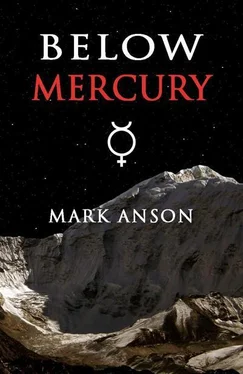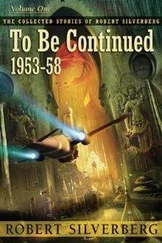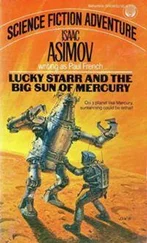The Baltimore and its brethren were the biggest spacecraft in the Astronautics Corps, and they existed for one purpose: to transport crew and materials round the Solar System. Boosted into space in sections by huge launch vehicles, and assembled and fuelled in Earth orbit, the Baltimore could never land on any planet. It lived out its entire life in space, plying back and forth between orbits around planets and moons, hauling cargo modules, or ferrying crews to and from the manned bases. The tug could undertake even longer voyages entirely on automatic pilot, disappearing into the vastness of deep space and returning with thousands of tonnes of liquid propellants from the refineries on the frozen outer moons of Jupiter.
The Baltimore was enormous, stretching eighty metres from the exhaust nozzles of its giant nuclear engine to the docking adapter at the far end. As it fell through space, it rotated about its centre of mass at a leisurely three revolutions a minute, imparting a small apparent gravity to the manned parts of its structure.
At the aft end of the tug was the large and heavy mass of the nuclear engine and power plant. Around it, swathed in reflective insulation, an intricate network of propellant and cooling lines ran between the engine and the generators that provided electrical power for the tug.
Behind the engine and its heavy neutron shield were six huge solar panels for backup power, each over seven metres long. Arranged in a circle round the reactor mount like the petals of a giant flower, the solar panels supported a vast, circular sunshade of shimmering, reflective plastic. As the Baltimore rotated, the shadow of the sunshade raced out and over the long length of the tug, plunging it into darkness, and retreated again, in an endless cycle, as regular as a clock.
In the final stages of the voyage, the tug’s rotation would be halted and the sunshade oriented permanently against the Sun, to provide continuous shadow for the tug’s structure. For now, though, the heating loads were low enough to allow the tug to rotate and create its illusion of gravity.
Behind the sunshade, a cluster of seven giant cylindrical tanks, each one over thirty metres long, formed the middle section of the tug, and held the liquid ammonia propellant for the tug’s nuclear engine.
Forward of the main propellant tanks, six smaller, heavily insulated tanks held the tug’s reserves of cryogenic fuels; hundreds of tonnes of liquid oxygen and propane for refuelling the manned vehicles that it towed through space.
At the forward end of the tug, in front of the cryogenic tanks, was the crew module, providing two decks of living accommodation for the flight crew and passengers. Finally, locked firmly in place to the docking adapter at the end of the crew module, the spaceplane waited, its systems shut down until the tug reached Mercury.
Matt Crawford stood by a porthole on the lounge deck, gazing at the stars wheeling past outside. He had found he needed to look outside at least once a day, just to affirm that there was an outside beyond the walls of the crew module, and to see the cold hardness of the stars in the jet-black sky.
Staring at the scene for too long could induce motion sickness, though. Matt released the polarisation controls, and the view faded to black. He turned and walked over to the semi-circular couch in the centre of the lounge area. Weight bands on his wrists and ankles helped him to move normally in the low gravity, but he was careful not to hurry. The gentle acceleration produced by the tug’s regular rotation was only one-third that of Earth’s gravity, but sudden movements could still confuse the vestibular system.
The circular room of the deck was deserted. Elliott and Wilson were asleep, the curtains drawn over their bunk areas. Clare was on duty on the command deck one floor below, and Abrams and Bergman were down there as well; Matt could hear their voices coming up through the ladder stairwell. At first, it had seemed odd that the forward end of the tug was ‘downwards’, but Matt had quickly got used to this apparent contradiction.
The hourly news was playing on the link from Earth, but Matt had already watched it over breakfast. The small dishwasher swished and hummed in the background. It was easy to believe that he was in an apartment room on Earth, Matt thought, and not in deep space, eight million kilometres from home.
Matt cast an eye round the nine-metre diameter circular lounge deck, to check that he had put everything back in its place before his watch started. Spacecraft became cluttered very quickly, with so many people living together in a small space. It was more than just courtesy to leave the rest area tidy for others; it was a necessity.
The lounge deck was devoted entirely to the needs of the passengers, and the flight crew when they were off-duty. It housed eight individual sleeping berths arranged round the circular walls of the deck, each with curtains to create a private space. A bathroom housed the twin luxuries of a decent shower and a zero gravity toilet, and the rest of the deck held the kitchen facilities and a lounge area, for relaxing, reading, or watching movies. These home comforts would have seemed extravagant to the early space explorers, but for long voyages through the depths of space, they were essential for crew morale and well-being.
In the centre of the deck was a circular opening with a narrow handrail, through which a vertical ladder ran, giving access to the command deck below. The ladder also led upwards into a conical chamber that contained food stores and other consumables.
Above this, a heavy door opened into a narrower cylindrical section, five metres long, nestling in the space between the six cryogenic fuel tanks.
Surrounded on all sides by thick, polyethylene radiation shields, and by the heavy mass of the liquid propellants in the fuel tanks, this was the innermost refuge for the crew in the event of a major solar radiation event.
It was also where the twelve stasis chambers were located, for use on the long voyages to Mars and the outer planets. Spaced out around the walls of the refuge, each unit could maintain a healthy human being in a state of reduced metabolism for many months at a time, saving huge amounts of food and other consumables, and reducing the journey time to the blink of an eye.
For the relatively short flights to Venus and Mercury, however, the stasis chambers were rarely used, and the coffin-like chambers, with their attendant medical consoles, were silent and dark. The effect was uncomfortably reminiscent of a tomb, and although the refuge could be used for additional sleeping space if needed, most crews tended to leave it alone.
It was nearly time for Matt and Abrams to take over the night watch, and Matt climbed down the ladder into the command deck. It was noisier here; the hum of equipment and subdued sound of radio transmissions from distant bases filled the air.
As well as the tug’s flight controls, the command deck housed communications and environmental equipment, a second bathroom, four further berths, and a small gym area, where Bergman was pedalling away vigorously on the exercise bike.
Matt walked over to the flight deck, to where Clare Foster sat in the commander’s seat, facing the slope of the docking windows. The flight deck seats and control consoles were mounted on struts so that they could be reoriented for weightless flight, when a good view was needed over the tug’s nose. For now, though, the seats faced ‘outwards’. Matt could see Clare’s reflection in the window glass, looking back at him.
‘Morning.’
‘Hi.’ Clare stretched and smiled. ‘You ready to take over?’ Like all of them, she wore the standard dark blue flight overalls, with her name over the left breast pocket. Unlike the passengers, however, she carried the astronaut badge of the Corps over her name, and her rank insignia on the shoulders.
Читать дальше











